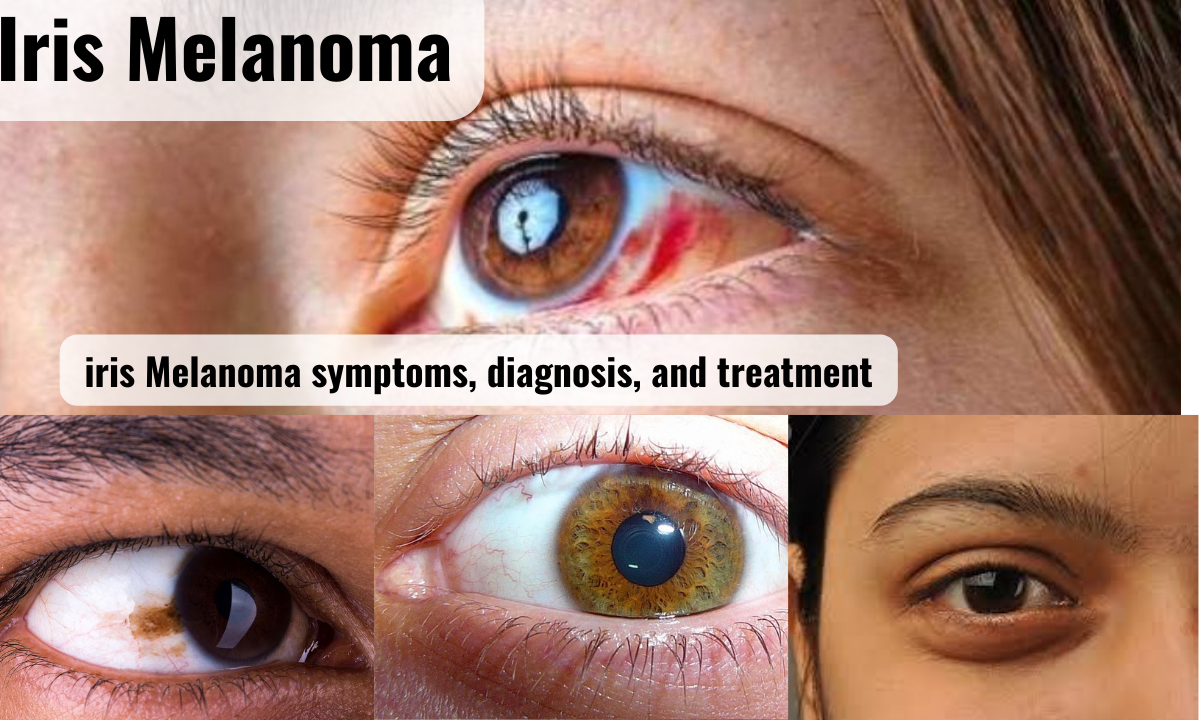Iris Melanoma: Understanding the Rare Eye Cancer
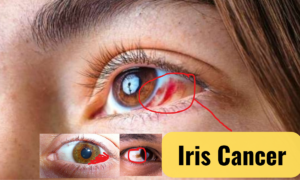
Iris melanoma, though rare, is a serious condition that affects the colored part of the eye known as the iris. Melanoma, in general, is a type of cancer that develops from melanocytes, the cells that produce pigment. While most melanomas occur on the skin, they can also develop in other parts of the body, including the eye.
Types of iris Melanoma in Animal
-
Iris melanoma in Cats
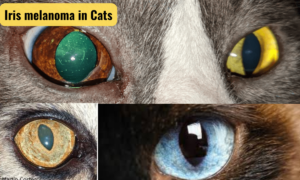
Cats with iris melanosis often have a benign change that should be closely watched, but uveal melanoma is a malignant tumor that typically starts in the iris and can spread to other regions of the body and cause inflammation and glaucoma in addition to other eye-related problems.
-
Iris melanoma in Dog
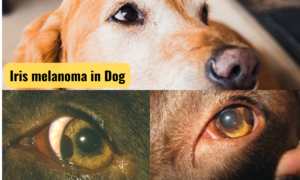
One or more roughly round brown or black patches, or lesions, may be visible on the iris if you have melanoma of the iris. They could start off flat or elevated and develop into distinct, elevated pigmented masses over time. You can see a black mass in your eye that extends past the pupil if you have ciliary body melanoma.
-
Iris melanoma in Horse
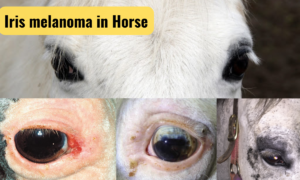
Melanomas are uncommon in other horse colors but common in grey horses. They frequently affect the edge of the eyelid and typically manifest as nodules in the eyelid (Figure 8). They usually have a benign, slow-growing character and hardly ever become ulcerated.
Causes and Risk Factors
The exact cause of iris melanoma is not fully understood, but like other types of melanoma, it is believed to be influenced by a combination of genetic and environmental factors. Individuals with a family history of melanoma may have a higher risk of developing iris melanoma. Additionally, prolonged exposure to ultraviolet (UV) radiation from the sun or artificial sources, such as tanning beds, is considered a significant risk factor.
Signs and Symptoms
Iris melanoma often presents with subtle symptoms that may be mistaken for other eye conditions. These can include changes in eye color, such as darkening or the appearance of spots or freckles on the iris. Other symptoms may include blurred vision, visual disturbances, or a feeling of pressure or pain in the eye.
Diagnosis
Diagnosing iris melanoma typically involves a comprehensive eye examination by an ophthalmologist. This may include a thorough evaluation of the iris using specialized instruments. Imaging tests such as ultrasound or magnetic resonance imaging (MRI) may also be performed to assess the size and extent of the tumor. In some cases, a biopsy may be necessary to confirm the diagnosis.
Treatment Options
Treatment for iris melanoma depends on various factors, including the size and location of the tumor, as well as the individual’s overall health and preferences. Options may include surgical removal of the tumor, radiation therapy, laser therapy to destroy abnormal cells, or medications to target cancer cells.
Prognosis and Survival Rate
The prognosis for iris melanoma can vary depending on the stage of the disease and other factors such as tumor size and location. Generally, iris melanoma has a good prognosis, especially when diagnosed and treated early. However, some cases may be more aggressive and have a poorer outlook. The survival rate for iris melanoma is relatively high compared to other forms of melanoma.
Prevention Tips
While it may not be possible to prevent iris melanoma entirely, there are steps individuals can take to reduce their risk. This includes wearing sunglasses or protective eyewear outdoors to shield the eyes from UV radiation, especially during peak sunlight hours. Regular eye examinations can also help detect any abnormalities early on.
Living with Iris Melanoma
Receiving a diagnosis of iris melanoma can be overwhelming, but it’s essential for individuals to seek support from healthcare providers, family, and friends. Coping strategies such as joining support groups or seeking counseling can help manage the emotional impact of the disease. Additionally, following up with regular medical appointments and monitoring is crucial for ongoing care and early detection of any recurrence.
Research and Advances
Ongoing research into iris melanoma is focused on improving diagnostic techniques, developing targeted therapies, and better understanding the underlying genetic factors that contribute to the disease. Promising advancements in treatment options offer hope for improved outcomes and quality of life for individuals affected by this rare form of cancer.
Case Studies
Real-life examples of individuals diagnosed with iris melanoma underscore the importance of early detection and prompt treatment. These case studies highlight different treatment approaches and outcomes, providing valuable insights into the management of this condition.
FAQs About Iris Melanoma
- What are the common symptoms of iris melanoma?
The common symptoms include changes in eye color, blurred vision, and eye pain or pressure. - How is iris melanoma diagnosed?
Diagnosis involves a comprehensive eye examination, imaging tests, and sometimes a biopsy. - What are the treatment options for iris melanoma?
Treatment options include surgery, radiation therapy, laser therapy, and medications. - Is iris melanoma hereditary?
While there may be a genetic component, iris melanoma is not always hereditary. - Can iris melanoma spread to other parts of the body?
In rare cases, iris melanoma can spread to other parts of the body, but early detection and treatment can help prevent this. -
Circumscribed iris melanomas are most frequently detected in the inferior part of the iris and manifest as a well-defined, variably pigmented mass in the iris stroma. Both the form and the level of pigmentation are subject to variation. Some are little and level, while others have a raised, dome-like form.
-
What is the first stage of eye melanoma? Stage I: The tumor is category 1 in size, has not spread to the regional lymph nodes or other parts of the body, and does not affect the ciliary body or any other components of the eye (T1a, N0, M0). Stage IIA: The tumor is a size category 1 that may or may not extend extraocularly and may or may not involve the ciliary body.
-
What are the symptoms of melanoma in the eye?

-
-
Symptoms and indications of ocular melanoma
-
impaired or hazy vision in one eye.
-
reduction in peripheral vision.
-
spots of brown or black color on the eye’s whites.
-
A shadowy area on the iris.
-
tiny dots, crooked lines, or “floaters” in your field of vision.
-
flashes over your eyes.
-
a shift in the pupil’s shape.
-
- Where does iris melanoma spread? An iris stromal melanocyte undergoes malignant transformation to become the tumor, which then grows throughout the iris and invades the extraocular tissues and angle.
- आईरिस मेलेनोमा क्या है? आईरिस स्ट्रोमा में एक भिन्न रूप से वर्णित अच्छी तरह से परिभाषित द्रव्यमान के रूप में दिखाई देता है और आमतौर पर आईरिस के निचले आधे हिस्से में पाया जाता है । रंजकता की डिग्री आकार के साथ-साथ भिन्न हो सकती है। कुछ छोटे और सपाट हैं और अन्य ऊंचे और गुंबद के आकार के हैं।
- Malignant melanoma in horses ? Typically, melanomas begin as tiny, spherical, solid lumps in and under the skin. They come in a variety of sizes and can even create chains. While the size of the nearby tumors may remain consistent, one tumor may develop at an alarming rate. They have the ability to enlarge and merge into larger tumor areas as they become more hazardous.
- how to prevent melanoma in grey horses ? Given the low likelihood of gray horse melanoma prevention, early care is crucial to preserving the horse’s quality of life. Major advised owners to monitor typical regions where melanomas occur and take note of their appearance.
- What is melanoma in horses treatment ?

When melanomas can be surgically removed without causing major skin damage or scarring, such procedure is advised. Surgery is typically an option for individual, ulcerated or pedunculated tumors.
Conclusion
Iris melanoma is a rare but serious form of eye cancer that requires prompt diagnosis and treatment. By understanding the risk factors, symptoms, and treatment options, individuals can take proactive steps to protect their eye health and improve their outcomes. Regular eye examinations and sun protection are essential for early detection and prevention. With ongoing research and advances in treatment, there is hope for better outcomes and quality of life for those affected by iris melanoma.
